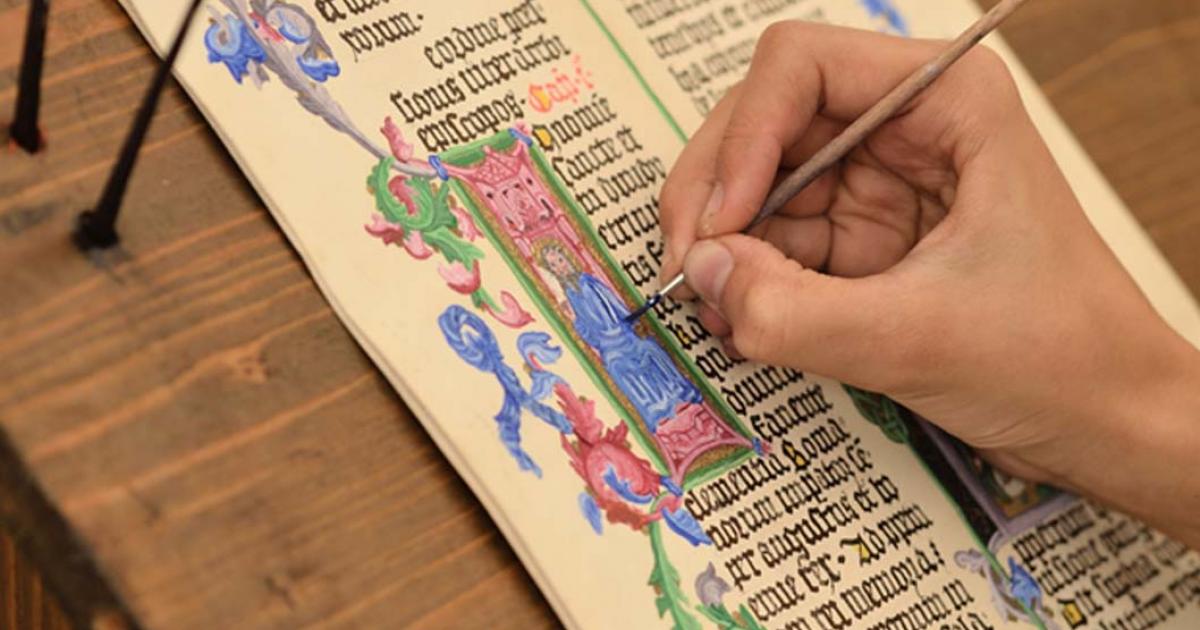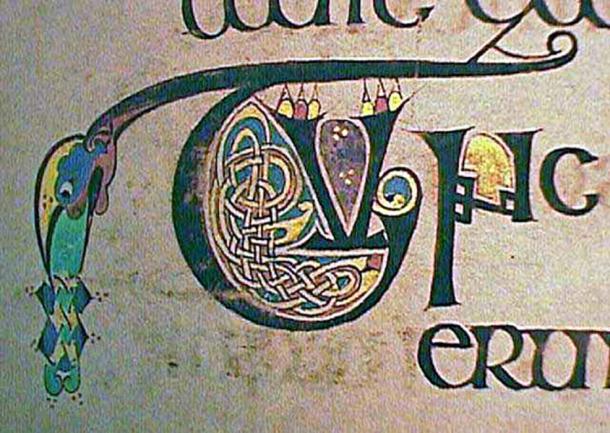
Drolleries of the Middle Ages Included Comical Yet Sinister Killer Rabbits and Erotic Art
A drollerie (also spelled as drollery) is a type of marginalia found on Medieval manuscripts. Drolleries are amusing, often grotesque, figures drawn on the edges of manuscripts and may be found in works from different parts of Europe throughout the Middle Ages. The practice, however, was especially popular between the 13 th and 15 th centuries. While drolleries are often meant to evoke laughter, they may be understood at a deeper level and reveal aspects of society at that time.
Drolleries – Works of Art and Bizarre Decorations
During the Middle Ages, the production of manuscripts was an expensive endeavor due to the skill and time required. Apart from the scribes, who were responsible for copying the text of the manuscript, the process also involved illustrators, who had the task of decorating the work. Such decorations are usually found on the margins of the text and come in a variety of forms.
While some of these manuscript decorations may be considered to be intricate works of art, others stand out thanks to their bizarre nature. Drolleries fall into the latter category and include a variety of subjects. One of these is the depiction of anthropomorphized animals or animals doing human activities. This is seen, for example, in the drawings of rabbits engaged in acts of violence – decapitating human prisoners, jousting, and hunting other animals. Considering that the rabbit is one of the most timid of animals, it is impossible to imagine them engaged in such acts. Thus, such drolleries were clearly meant to humor observers.

Drolleries of the Middle Ages included rabbits engaged in acts of violence. (Kallinikov / Public Domain)
Animals Used in Drolleries
Apart from aggressive rabbits, drolleries also depict a variety of other animals. This type of drollerie had its origins in bestiaries, which are compendia of beasts that were hugely popular during the Middle Ages. Bestiaries are thought to have lost their appeal by the second half of the 13 th century, as evident in their decreased production. Nevertheless, the creatures of such bestiaries retained their popularity and continued to be depicted as drolleries. Such drolleries include both real animals, including birds and stags, and fantastic creatures, like dragons and unicorns. It may be added that these creatures are normally drawn based on their descriptions as found in the bestiaries.

A page of the Maastricht Book of Hours (BL Stowe MS17), an illuminated manuscript mainly known for its lively depictions of animals and half-animals. (Public Domain)
Medieval bestiaries are also believed to have served as the inspiration for the heraldic beasts that adorn the arms of the European nobility. As manuscripts were often commissioned by nobles, it would have been natural that their arms and heraldic be depicted in such works as drolleries. These images, however, were not meant to humor but to serve as a statement of the family’s prestige.

Medieval bestiaries were used in drolleries. (Soerfm / Public Domain)
Other Imagery In Drolleries
The subject of drolleries did not only include animals, real or imagined, humorous or serious, but also revolved around a variety of other themes. Sexuality was a theme that the Medieval illustrators seemed to have relished dealing with. Such obscene or erotic art was not limited to secular literature but also found in sacred texts.

This drollerie Maastricht Book of Hours depicts a woman (a nun?) dancing to music played by a monk. (Public Domain)
In the Rutland Psalter, for instance, there is the image of a naked man flaunting his behind, while a simian figure, armed with a lance and shield and riding an ostrich or goose, charges at him. In another, the Ormesby Psalter, a man is shown blowing a trumpet into the anus of a horse-headed boy. Phalluses are also often depicted. In one manuscript, a naked woman is shown riding on a flying phallus creature, while in another, a medical treatise of John Arderne, a disembodied penis is depicted in a basket.
- Hippocratic Medical Recipe Lost in a Famous Egyptian Monastery Finally Comes to Light
- Aspidochelone: A Giant Sea Monster of the Ancient World and an Allegorical Beast
- The Ancient Book of Deer, Oldest Known Gaelic Text in Existence

Drolleries did not only include animals but also revolved around a variety of other themes. (Jason.nlw / Public Domain)
Yet another group of drolleries may be categorized as ‘doodles’. Unlike the types of drolleries previously mentioned, which would have been made by professionals, such images might have been the work of children. An example of these doodles is visible in a manuscript known as Life Of Our Lady, in the University of Glasgow. The doodles in this manuscript include an object that looks like a ship with rigging complete with little people and a peacock with a rider.

Doodles were a type of drollery in Medieval manuscripts. (Bkwillwm / Public Domain)
Lastly, it may be mentioned that drolleries were but one of the many types of marginalia that were made by Medieval manuscript makers. Among the more interesting of these are the complaints scribbled onto the edges of texts by the Medieval scribes and copyists.
Some examples of complaints and remarks made by them include “Thank God, it will soon be dark”, “The ink is thin”, and “Now I’ve written the whole thing: for Christ’s sake give me a drink”.
Top image: Drolleries were common in medieval manuscripts. Source: cobracz / Adobe.
By Wu Mingren
References
Burgess, A. 2017. The Strange and Grotesque Doodles in the Margins of Medieval Books. [Online] Available at: https://www.atlasobscura.com/articles/medieval-marginalia-books-doodles
Horowitz, K. 2016. 5 Very Weird Themes in Medieval Manuscripts. [Online] Available at: http://mentalfloss.com/article/89883/5-very-weird-marginalia-themes-medieval-manuscripts
Popova, M. 2012. Cheeky Complaints Monks Scribbled in the Margins of Manuscripts. [Online] Available at: https://www.theatlantic.com/entertainment/archive/2012/03/cheeky-complaints-monks-scribbled-in-the-margins-of-manuscripts/254868/
Sierzputowski, K. 2016. Violent Rabbit Illustrations Found in the Margins of Medieval Manuscripts. [Online] Available at: https://www.thisiscolossal.com/2016/05/violent-rabbit-illustrations-found-in-the-margins-of-medieval-manuscripts/
The British Library. 2019. Books of Beasts in the British Library: the Medieval Bestiary and its context. [Online] Available at: http://www.bl.uk/catalogues/illuminatedmanuscripts/TourBestiaryMargins.asp
The British Library. 2019. Catalogue of Illuminated Manuscripts, Glossary: D. [Online] Available at: http://www.bl.uk/catalogues/illuminatedmanuscripts/GlossD.asp
www.encyclopedia.com. 2019. Marginalia In Medieval Manuscripts. [Online] Available at: https://www.encyclopedia.com/social-sciences/encyclopedias-almanacs-transcripts-and-maps/marginalia-medieval-manuscripts















